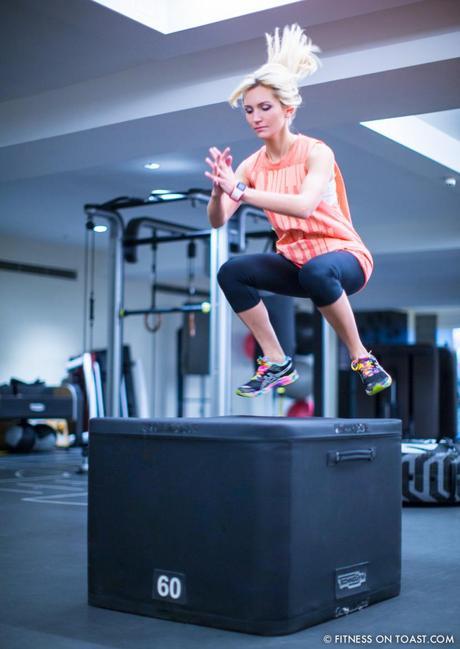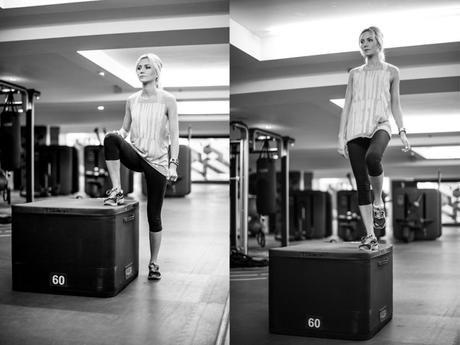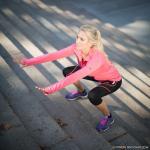

During a recent Leg Session (one of my favourite body parts to train), I decided to do some ‘plyo box squats’. The word plyo – a contraction of ‘plyometric’ – basically means ‘jump training’. A simple practise, yes, but an awesome weapon in the fitness arsenal, due to the amount of muscular and cardiovascular exertion it generates. This is a little post on the benefits on plyometrics, why box squats are so fantastic, and how to execute them correctly! Also included are some step-ups – oldies, but goodies :D
1) WHAT IS IT ???
Plyometric training is a great way to exert maximum effort in a very short space of time. It’s often executed through bodyweight compound movements, for examples burpees, box jumps, jumping lunges, jump squats etc. An easy way to think of it is that your feet don’t typically stay one the ground for too long. The musculature in the body is made up of slow-twitch muscles (aerobic strength – think endurance, marathons), and fast-twitch ones (more about anaerobic strength – think heavy weight training + explosive movements). Plyometric training is a superb way to develop these fast twitch muscle fibers, as the exercises efficiently condition you for greater speed, stamina and explosive power.
2) KEEP THE FORM!!!
Whilst you’ll be pushing yourself, and it’s pretty tempting to go all out as you get caught up in the adrenaline-fuelled jumps, I’d suggest slowing down in order to ensure your form remains perfect. Jumping exercises aren’t risk-free, as you’re working at speed; landing incorrectly could easily injure a wrist, knee, ankle etc. twist an ankle. Avoid concrete if you can find a softer, sprung surface. Also if you have weak or injured knees etc this type of training should certainly be avoided.
3) WHAT ARE THE BENEFITS ???
I’m a huge fan of squats and have written at length about their benefits in the past. These box squats give you the benefits of plyo plus squats, and if performed correctly, activate the largest muscle groups in the body (i.e. the quads, glutes and hamstrings). To boot, they also engage a good deal of stabilising muscles too (e.g. transverse abdominus, adductors, gastrocnemius, erector spinae). Being that they target larger muscle groups, that in turn boosts the operating metabolic rate which encourages faster recovery, and in turn consumes more calories. The legs might therefore burn their most calories whilst you’re at rest – the virtuous circle of burn! Also there’s the core reinforcement angle too – that muscular girdle we all wear around our midsection absorbs so much of our daily flak. The more conditioned we keep these muscles (abdominals, obliques, glutes & spinal fibres), the better we’ll feel! They really are marvellous, multi-purpose exercises.
4) HOW TO: Here’s how to incorporate box jumps into your lower-body training days:
1. Stand at a comfortable distance from the box in a neutral position.
2. Drop quickly into a half squat, and then just as you’re ready to jump, explode upwards from your hips, swing your arms, and push your feet through the floor to propel yourself up onto the box.
3. When you land on the box, envision the way cats land when they jump from something; you, too, should try to land this silently, squatting down to absorb the impact.
4. Jump back down, and once again absorb the impact by landing quietly, squatting as you do so.
5. Repeat to exhaustion.


Also, why not have a go at these step-ups too (as below images). Great for isolating single legs, and if you execute this with a regular rhythm and for a minute at a time, you’ll soon feel the burning benefit of the box :D


Image shot at Virgin Active Mayfair.
______________________
YOU MIGHT ALSO LIKE:

WHY TO SQUAT !!!

CHILI CON QUORNE

WHY TO PRESS UP

LUCAS HUGH IN COMO

